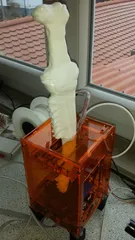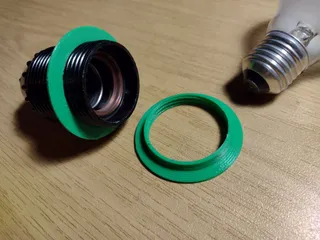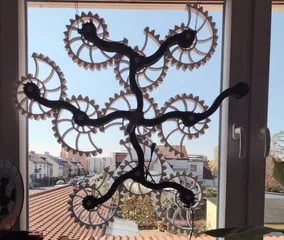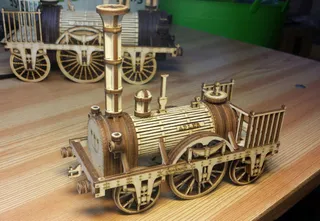Filament Thrust Bearing
Description
PDFIs it really necessary to mount filament spools vertically? Vertically obviously has the least chance for gravity to mess around and entangle layers on the spool. But let's see...
This is a thrust bearing for mounting a spool horizontally. It centers spools with a 19mm, 32mm or 52mm hole perfectly. Or any other if you don't mind that it moves a bit sideways..
To better fix spools on the center pin, some caps are available. Basically a cone centers the upper side of the spool. There is a short cap, for extreme narrow spools and a long cap for very wide spools. But in general the sponge cap should be able to cover most spool types.
The design was done with FreeCAD exercising the the sketch feature for most parts.
The bearing uses conical rollers and features a bottom opening, where a pin can be inserted, so that it will not fall apart as with other thrust bearings.
Print Settings
Printer:
Tinyboy Fabricator
Rafts:
Yes
Supports:
No
Resolution:
0.2mm
Infill:
30%
Notes:
Printed with Cura's concentric fill pattern on top and bottom. That yields nice and smooth tracks.
The 0.2 mm resolution should be changed to 0.1mm when printing top.stl and base.stl so that the slightly conical tracks are rendered in more steps.The bottom_pin should have a hexagonal fit so that top and top_pin cannot rotate against each other.
Post-Printing
Assembly
Put the rollers on the arms. They need to rotate freely. If not, watch out for loose filament like stringing or other defects.
The hexagon shaft of the bottom_pin should have a tight fit in the top and top_pin parts. If it is too loose apply some glue, if you cannot press it inwards, print another one scaled down to 99% or 98%. Theoretically there is 0.1mm clearance, that should give a snugly fit for most printers.
The caps are not really needed, they are a nice addition.
Pro-tip: apply some hot-glue to the bottom of the base. Then the mount stays in place and does not walk towards the printer, when it pulls in filament.
How I Designed This
Math?
The cones for the tracks and the rollers need to match exactly, so that the roller wants to roll in the exact same circle where the arms would guide it. This does not need any math,
if you start with pointed cones (smaller diameter 0) and let tips of top, bottom, roller meet in the same point. Then enlarge the rollers by adding the same amount to both diameters.
No math needed!
Measurements:
Supported spool sizes include (Inner diameter / outer diameter / width)
- 18.5mm / 128mm / 70mm Taulman 0.5kg
- 31mm / 163mm / 84mm sainsmart 1kg
- 53mm / 201mm / 65mm HERZ 1kg
- 53mm / 204mm / 74mm 3dfuel 1kg
- 57mm / 178mm / 93mm NuNus 1kg
Tags
Model origin
The author marked this model as their own original creation. Imported from Thingiverse.




